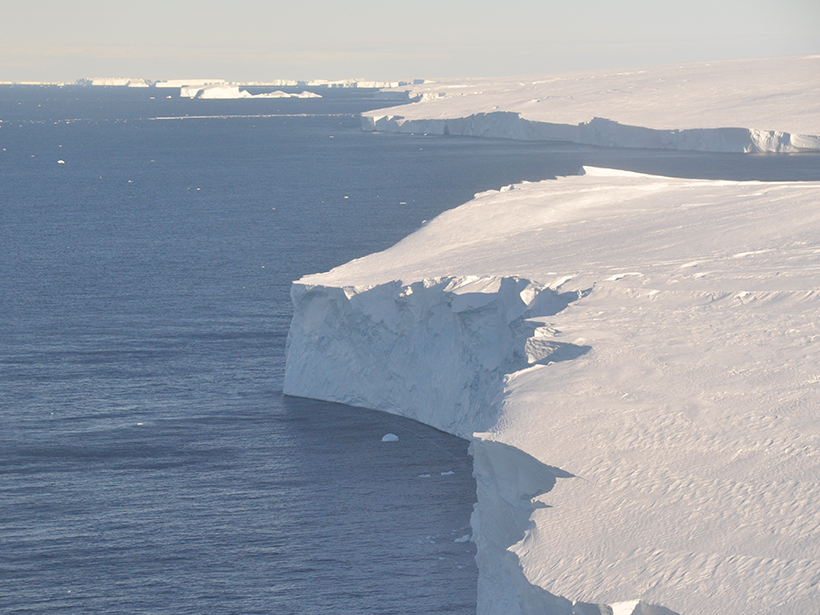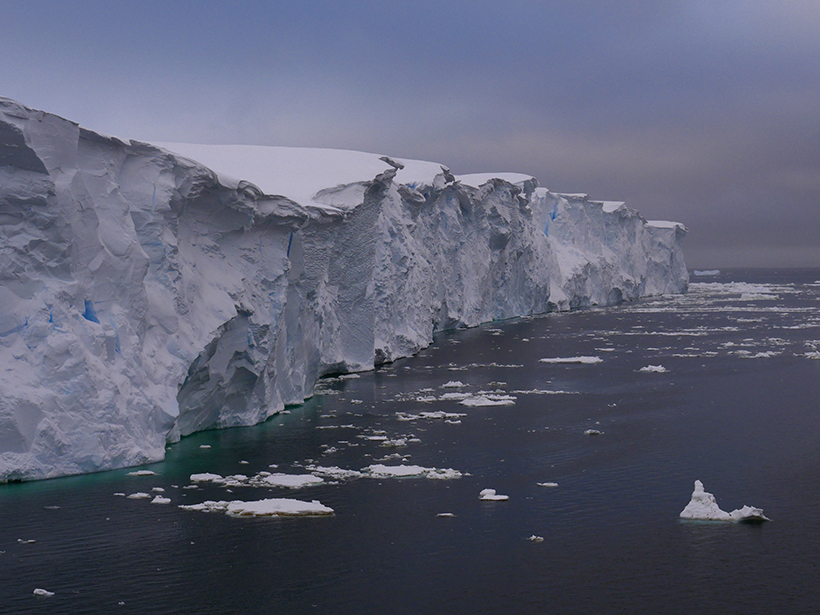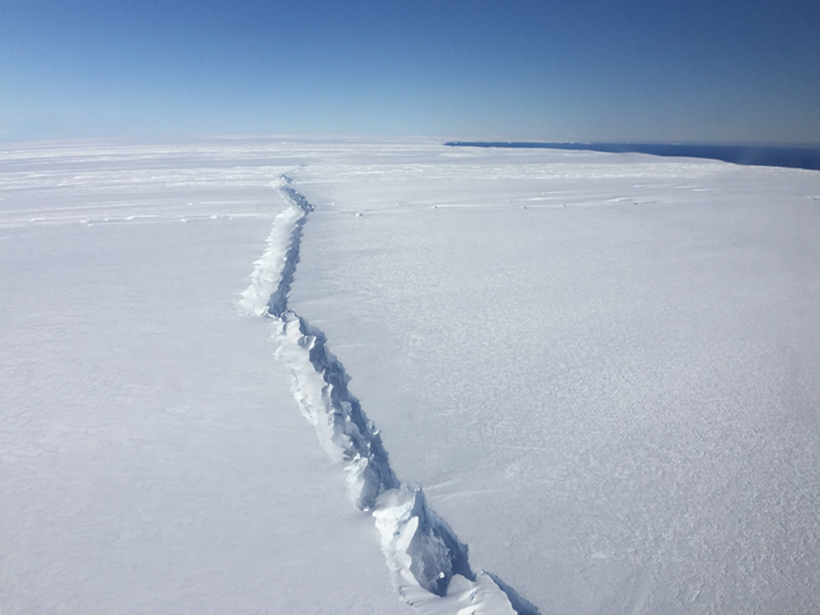These seismic events, triggered by icebergs capsizing and ramming into Thwaites, reveal that the glacier has lost some of its floating ice shelf.
Thwaites Glacier
Posted inFeatures
Diagnosing Thwaites
The water under a vulnerable Antarctic glacier is warming. Its catastrophic collapse could trigger a dramatic increase in global sea level.
Posted inNews
Controlled Explosions Pave the Way for Thwaites Glacier Research
Scientists detonate explosives in West Texas to prepare for fieldwork in West Antarctica.
Posted inResearch Spotlights
West Antarctic Ice Shelf Breaking Up from the Inside Out
Researchers trace the origin of a 2015 iceberg to a crack that formed deep beneath the ice.




